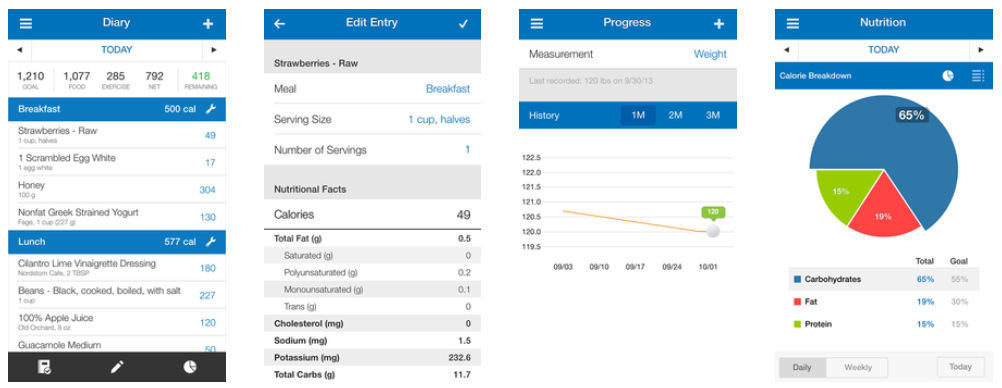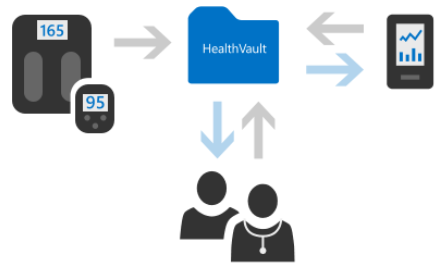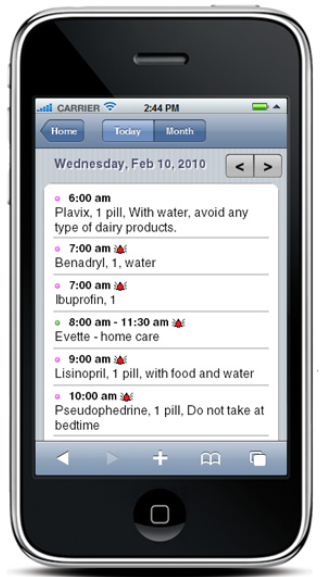Supporting Technologies
Consumer E-Health and Health Metrics -> Tools -> E-HealthE-Health Tools
- Wearable Personal Activity and Fitness Trackers
- Smart Scales
- Diet, Weight Loss and Fitness Apps
- Personal Health Record
- Personal Health Record sites
- Health Information from the Web
Wearable Personal Activity and Fitness Trackers
Wearable health and fitness tracking devices are giving more information than ever to individuals about activity levels, calorie burning, sleep patterns, heart rate, and other measures, depending on the type of device. Since the technology is constantly being updated, it is best to research the best devices online for the most current features and price points. The three types of devices – fitness trackers, smartwatches and running watches – are described in more detail below. (Note: Although some device brands are shown here, it is solely for illustration. The authors are not endorsing a particular brand).
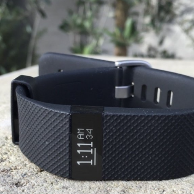 Fitness trackers provide detailed information about a person’s workout, so they are often used by the most serious athletes, especially in the gym. They focus on athletic performance and fine-tuned goals. These trackers don’t have access to apps, like other wearables, but they are less expensive, don’t have to be recharged every day or two, and keep the wearer focused on the workout. (Fitbit shown in photo)
Fitness trackers provide detailed information about a person’s workout, so they are often used by the most serious athletes, especially in the gym. They focus on athletic performance and fine-tuned goals. These trackers don’t have access to apps, like other wearables, but they are less expensive, don’t have to be recharged every day or two, and keep the wearer focused on the workout. (Fitbit shown in photo)
 Smartwatches are a lot like smartphones on one’s wrist, in that the person can not only read the time, but can also get emails and text messages, and gain access to various apps. The watches can track daily activity levels, monitor heart rate, and send notifications. It used to be that running watches were the main choice for serious athletes, but the smartwatch is catching up. (Samsung watch shown in photo)
Smartwatches are a lot like smartphones on one’s wrist, in that the person can not only read the time, but can also get emails and text messages, and gain access to various apps. The watches can track daily activity levels, monitor heart rate, and send notifications. It used to be that running watches were the main choice for serious athletes, but the smartwatch is catching up. (Samsung watch shown in photo)
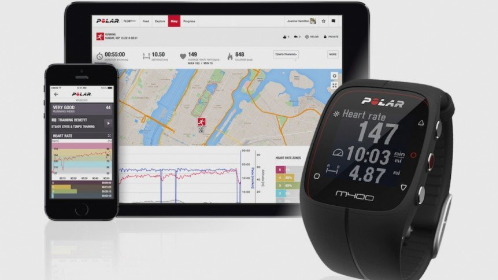 Running watches allow the athlete to track pace information, heart rate information, cadence, and even detailed observations of running style. Most have GPS and some have mapping to track the route and altitude. Running watches don’t have access to apps and music; instead they are dedicated to in-depth stats and other feedback for the serious runner.
Running watches allow the athlete to track pace information, heart rate information, cadence, and even detailed observations of running style. Most have GPS and some have mapping to track the route and altitude. Running watches don’t have access to apps and music; instead they are dedicated to in-depth stats and other feedback for the serious runner.
The Polar running watch tracks a runner’s pace, distance, and altitude with its built-in GPS;
Source: Polar website, https://www.polar.com/us-en/products/improve_fitness/running_multisport/m400
Smart Scales
The following are examples of smart scales – basically fancy bathroom scales — which communicate information about a person’s weight and body composition to smartphones, as well as to sites that help a person manage their fitness goals. More information is available at HealthIt.gov.
Withings – A scale with high-accuracy weight and body fat measurements, body mass index (BMI), and pulse. Data can be uploaded to the MyFitnessPal
Fitbit Aria – A scale that tracks and uploads weight, BMI, lean mass, and body fat percentage. It can sync with the user’s phone, as well as with Fitbit trackers and the Fitbit app.
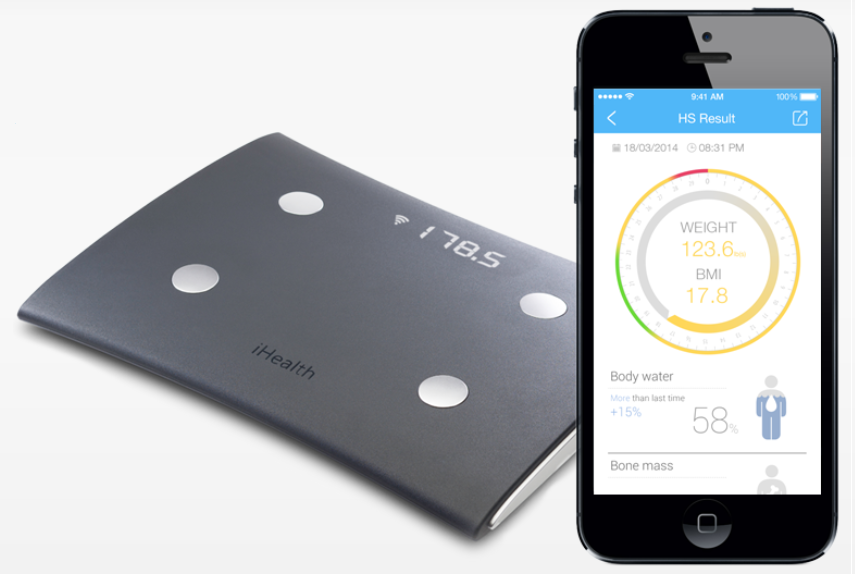 iHealth – A scale that measures weight, body fat percentage, lean mass, body water, bone mass and more. Once the scale is connected to a home WiFi network, it communicates the data to the iHealth MyVitals app.
iHealth – A scale that measures weight, body fat percentage, lean mass, body water, bone mass and more. Once the scale is connected to a home WiFi network, it communicates the data to the iHealth MyVitals app.
Source: iHealth website, https://ihealthlabs.com/wireless-scales/wireless-body-analysis-scale/
Diet, Weight Loss and Fitness Apps
The following are examples of the many diet, weight loss and fitness apps available on smartphones:[iii]
Lose It! – a free site for diet and fitness tracking that integrates with multiple devices and third-party sites.
Sparkpeople – an online calorie counter and personalized fitness program, with links to support groups.
MyFitnessPal – an app that allows users to track calories and exercise (see screenshots below).
Fitness Buddy – a fitness application that allows users to create a personal training plan and discover new exercises in the process.
Personal Health Record
Personal health records enable patients to keep track of their health information using a hosted website or smartphone app. Not only can patients keep all of their health information in one place, but they can share it with their doctors at scheduled appointments, or even with emergency responders in an emergency. More information about this can be found at the Mayo Clinic’s site.
Personal health records generally include:
- The primary care doctor’s name and phone number
- Allergies, including drug allergies
- Medications, including dosages
- Chronic health problems, such as high blood pressure
- Major surgeries, with dates
- Living will or advance directives
- Family history
- Immunization history
Consumers can also add information about what they are doing to prevent disease, such as:
- Results of screening tests
- Cholesterol level and blood pressure
- Exercise and dietary habits
- Health goals, such as stopping smoking or losing weight
Depending on the software or app used, a patient can also store PDFs of lab results or x-rays.
Personal Health Record sites:
Microsoft HealthVault lets the consumer gather, store, use and share health information for an individual or family. Apps compatible with the site help people stay motivated, analyze trends, and receive health education. Personal health devices such as blood pressure monitors, blood glucose monitors and weight scales can interface with HealthVault. The diagram below provides a pictorial representation of how each of the data sources interfaces with the app.
WebMD Personal Health Record is a free, standalone personal health record system with options for sharing information with doctors and others.
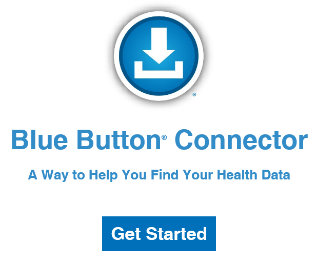 The Blue Button Connector is a website that helps people determine where they might be able to obtain their own health information online. It doesn’t have a database of information itself, but rather it identifies organizations that do so the patient can log onto each site and access their health history. The list of organizations participating in the service is expanding all the time, and currently includes some health insurance plans, hospitals or clinics, providers, pharmacies, labs and immunization registries. Participants show the “Blue Button Connector” link on their website.
The Blue Button Connector is a website that helps people determine where they might be able to obtain their own health information online. It doesn’t have a database of information itself, but rather it identifies organizations that do so the patient can log onto each site and access their health history. The list of organizations participating in the service is expanding all the time, and currently includes some health insurance plans, hospitals or clinics, providers, pharmacies, labs and immunization registries. Participants show the “Blue Button Connector” link on their website.
RememberItNow is a personal health hub with a strong focus on medication management. It schedules medication and re-order reminders, and tracks medication history and dosage instructions. There is some capacity to record medical history as well.
MyPHR offers an extensive guide to personal health record systems that are available today through online services or smartphone apps. Additional examples they list (again, these are not endorsed by the authors) are:
- VIA
- IHealthRecord
- Avado
- My Doclopedia PHR
- MyMedWall
- dLife
- ZweenaHealth
- ZebraHealth
- myHealthFolders
- EMRy STICK
- AboutMyHealth
- MyChart
- MedicAlert
- Health Companion
- Healthspek
Health Information from the Web
With the abundance of information available on the Internet, how should a consumer judge whether the information they are receiving is accurate? Some questions to consider are as follows (drawn from HealthIt.gov
Is it up-to-date? Most web pages will indicate when they were last updated, and smartphone apps will show when the latest version was released. When reading an article, any references to research should, in most cases, be from the last five years. This is not always the case since some science goes back years, if not decades (i.e. basic care of cuts and bruises). In either case the consumer should consider how current the information is.
Whose name is on it and who provides it? While some websites are sponsored by government agencies, non-profit organizations, or educational institutions, others are sponsored by private companies. The user should keep in mind that the sponsor may have their own agenda and therefore may not objectively describe the topic.
Is the information accurate? Medicine is based on science, but some information on the Internet is not. The patient should consider sources carefully, especially if they point the reader toward a certain treatment option or product.

